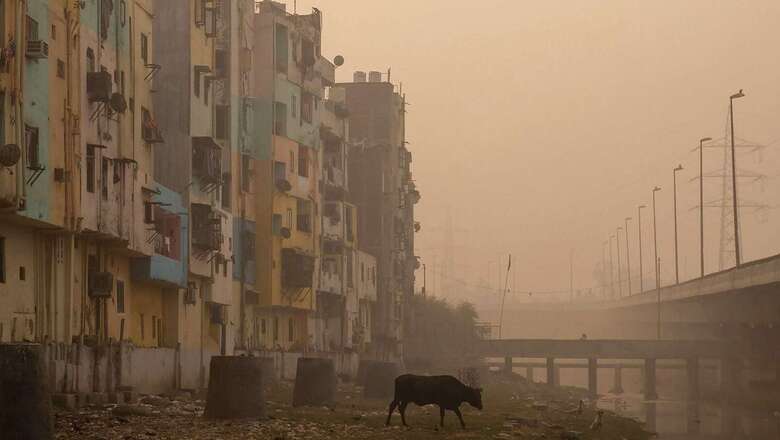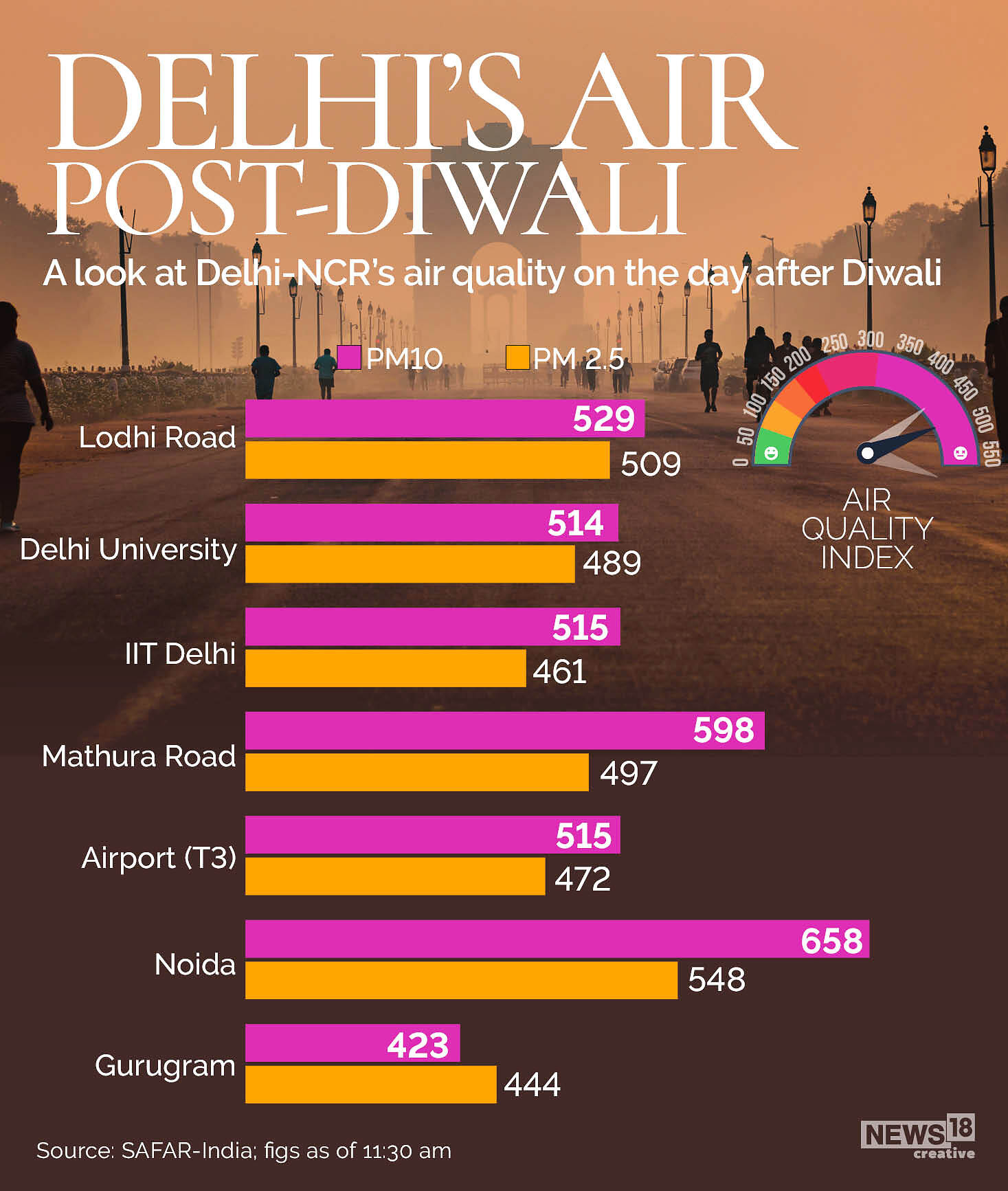
views
Environment experts have lauded India for doing more than most countries, including China, and reducing emissions. According to them, the country’s pledge at COP26 to achieve net zero carbon emissions by 2070 is “real climate action”. The promises made by Prime Minister Narendra Modi to tackle climate change at the 26th international climate conference in Glasgow included achieving carbon neutrality by 2070.
While the experts said that by making the pledge, India has put the ball in the court of developed nations to fulfil the promise $1 trillion of climate finance, the move does not bring relief from the immediate problem of toxic air that the people, especially those in the national capital, are having to breath in.
Also Read: Data From 5 Years Shows AQI Shot up to Toxic Levels Each Diwali, Delhiites Learnt No Lessons
The Air Quality Index deteriorates to a new low each year around the months of October-December as stubble burning from neighbouring states intensifies and people violate norms and burst firecrackers to celebrate the festival of Diwali. This year, too, despite a Supreme Court order, several appeals by the Delhi government and other efforts in place to keep a check on bursting of firecrackers during Diwali, several areas in the city reported violations as people burst crackers all through Thursday.
On Friday morning, Delhiites woke up to a thick blanket of smog and a worrying AQI of 617. People from several parts of the city and its suburbs complained of itchy throat and watery eyes. The city’s overall air quality index was 451 at 8 am and entered the “severe” category, according to the Ministry of Earth Sciences’ air quality forecast agency System of Air Quality and Weather Forecasting And Research (SAFAR). At around 3am, the air quality at Janpath in Delhi was in ‘hazardous’ category with PM2.5 at 655.07.

Modi, The Economist said in a piece on Friday, highlighted at Glasgow that while poor countries bear a mere fraction of the blame for creating the world’s climate mess, some, such as India, have done better at keeping environmental commitments than many rich countries.
As per the report, India, with 18% of the world’s population, is estimated to have caused just 3% of accumulated CO2 emissions. Yet even as Indian leaders repeatedly—and sometimes justifiably—take the moral high ground on climate change’s long-term challenges, their people continue to suffer and die from its immediate, home-grown causes, it says.
The Economist further points out that the problem is not faced by Delhi alone. “In winter the Himalayas trap the combined exhaust of the 600m people who populate the sprawling Indo-Gangetic Plain. From diesel pumps for irrigation to cremation pyres and from coal-fired power plants to gas-guzzling suvs, the smoke combines in a toxic stew that can hang for weeks in the season’s typically windless conditions. Big provincial cities such as Lucknow and Patna are just as sooty as Delhi. So are many rural areas,” it says.
Climate change activist and director general of Centre for Science and Environment Sunita Narain has said that India has laid out its roadmap, and targets of non-fossil fuel, renewable energy (RE) and reduction of carbon intensity are all pathways to get one billion tonnes carbon emission reduction by 2030.
“RE target of 50 per cent, non-fossil fuel 500 GW; carbon intensity of 45 per cent are all pathways to get to 1 billion tonnes carbon emission reduction by 2030. India has laid out its roadmap; this is more than OECD and certainly what China has done. India enhanced NDC (Nationally Determined Contribution) is a challenge to the world to step up,” she said in a tweet.
Along with this ready roadmap, India has taken several other quick measures to prevent air pollution, including the replacement of solid fuels with gas for cooking.
It has also ramped up its solar and wind power capacity and, backed by Modi, tightened the vehicle-emissions rules. With a goal to cut pollution in 122 cities by up to 30% in the next five years, the central government in 2019 also launched a National Clean Air Programme.
Read all the Latest India News here




















Comments
0 comment